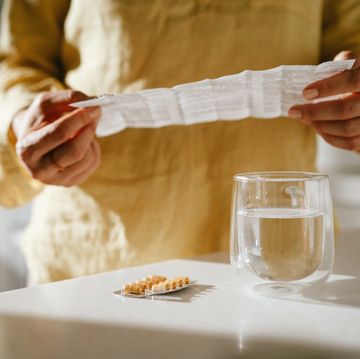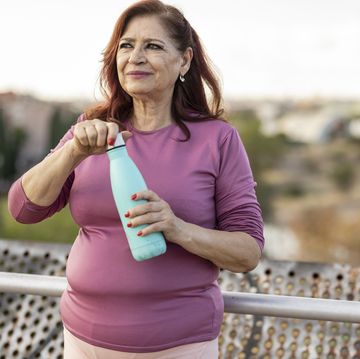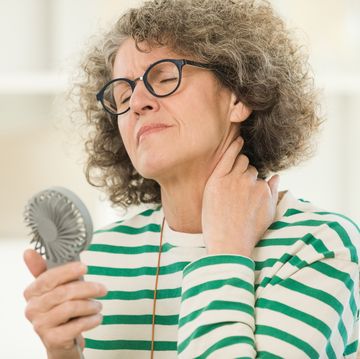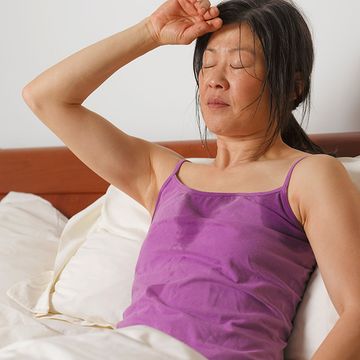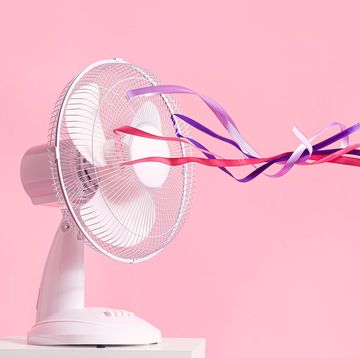Urinary incontinence affects 17 to 40% of American women in their 40s and 50s. Stress incontinence develops when the urethral sphincter, the muscle that opens and closes the opening to the urethra, loses strength, or when the pelvic-floor muscles (which support the bladder, uterus, and intestines) become weak or injured, which is often caused by pregnancy, delivery, or age. Urge incontinence, also called overactive bladder, can also be caused by pelvic-floor problems but may be related to a weakened or overreactive nervous system and the aging of the bladder, both of which can make the bladder feel incapable of holding any urine. About 36% of incontinent women have both kinds.
Stress incontinence may occur during moments of physical strain, such as when you cough, serve a tennis ball, or give a deep belly laugh. With urge incontinence, you may leak urine because you feel the need to go suddenly and often, even when your bladder isn't full.
Read on for natural remedies and other solutions for better bladder control.
Kegel Exercises
How it works: Women with stress incontinence who consistently do pelvic-floor exercises experience a 70% improvement in symptoms, and experts say building these muscles may also help with urge incontinence. That's why Kegels are a mainstay of incontinence therapy. "Kegels work because over time they thicken the muscles that hold your urethra and other organs in place," says Jill Maura Rabin, MD, head of urogynecology at Long Island Jewish Medical Center. She suggests that beginners contract their pelvic-floor muscles for 5 seconds, and then relax them for 5 seconds, repeating this 5 times, 10 to 20 times a day. For more on Kegel exercises, read 3 Questions And Answers About Kegels.
Reprogram Your Bladder
How it works: If you have urge incontinence, bladder training may help. With this form of behavioral therapy, you make yourself wait when you feel the urge to urinate, gradually increasing the intervals between bathroom trips.
Yoga For Your Pelvis
How it works: Mula Bandha, a posture considered key to any yoga practice, involves tightening the muscles that control the urethral sphincter, producing an effect identical to that of Kegel exercises. Other postures, such as the Fish, the Pike, and the Crow, focus on increasing pelvic strength, which can make it easier to hold in urine.
MORE: 9 Yoga Poses For Better Sex
Prescription Meds
How it works: The drugs available are approved to treat only urge incontinence, which they do by helping to relax the bladder, letting it hold more urine for longer intervals, Dr. Rabin says. These drugs include Ditropan, Detrol, and Enablex, among others, and may be available as capsules, pills, patches, or gels. They help most women but may need to be taken indefinitely and can cause mild side effects, such as dry mouth and constipation.
MORE: The Top 10 Most-Prescribed Drugs
Vaginal Pessary
How it works: This is a flexible silicone device (usually a ring) that you insert into your vagina, where it pushes up on the vaginal wall and urethra to help support the bladder and uterus. If you have stress incontinence, a doctor or nurse can fit one for you; you'll need regular exams to ensure it doesn't irritate your vagina.
Electrical Stimulation
How it works: Gentle volts of electricity, delivered through a vaginal probe by a medical professional, may activate and strengthen pelvic-floor muscles. "It feels like a tiny hum or pulse but doesn't hurt," Dr. Rabin says. Another method, used solely for urge incontinence, involves a device that's implanted under the skin of the upper buttock to stimulate the sacral nerve, which connects to the bladder and pelvic floor.
Surgery
How it works: For stress incontinence, today's outpatient surgery offers a high cure rate. Doctors insert a short sling that remains permanently in the body to help close the urethra. Generally speaking, surgery isn't recommended until you've exhausted other options.
MORE: The Top Surgeries For Baby Boomers
Drink Less
How it works: "If you have a weak bladder and drink 8 glasses of water a day, reducing this to 4 to 6 glasses may help decrease how often you feel the need to urinate," says Benjamin Brucker, MD, assistant professor in the urology department at NYU Langone Medical Center.
Avoid Dietary Triggers
How it works: Many common foods, such as caffeine, citrus juices, alcohol, chocolate, hot peppers, aspartame (Equal), and spicy dishes, can worsen urge incontinence, says Dr. Rabin. "One theory is that these foods may trigger neural receptors in the bladder that overreact to even trace amounts of urine," she says. She asks patients who come to her complaining of incontinence to keep a diary and eliminate one food at a time for 2 weeks each to help isolate triggers.
Check Your Medicine Cabinet
How it works: Common drugs, including antihistamines, tricyclics (a class of antidepressants), and blood pressure medications, can interfere with muscle contraction in the bladder and urethral sphincter, thus worsening incontinence. Ask your doctor for bladder-friendly alternatives.
Lose Weight
How it works: Extra pounds strain your pelvic-floor muscles, and losing even a little weight can improve symptoms. In one study, 75% of women who lost 5 to 10% of their weight experienced a significant decrease in urine leakage.





